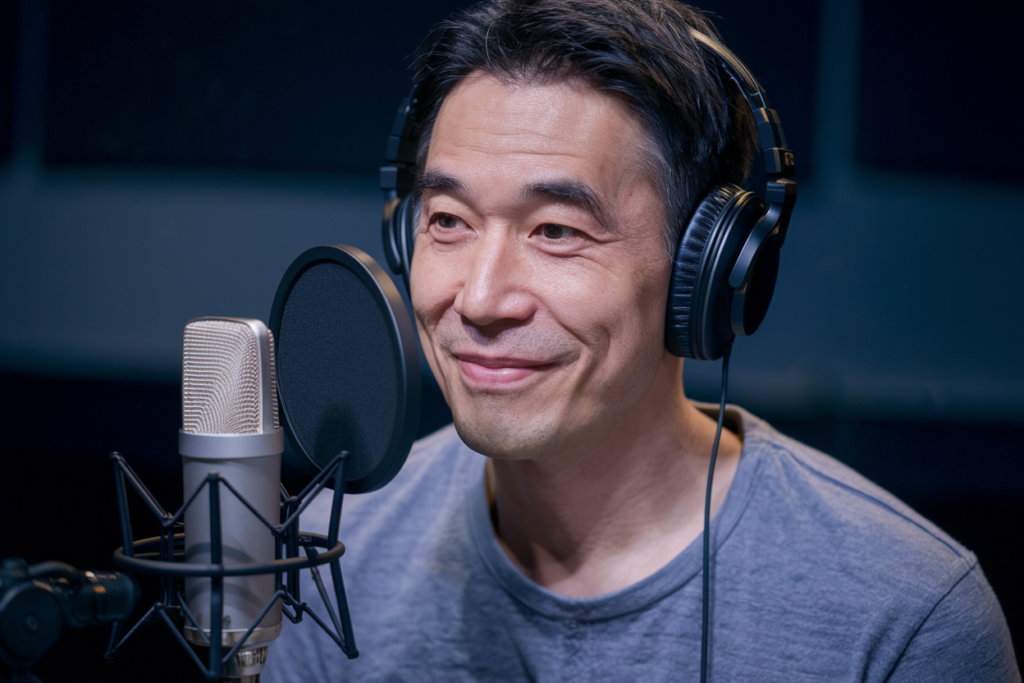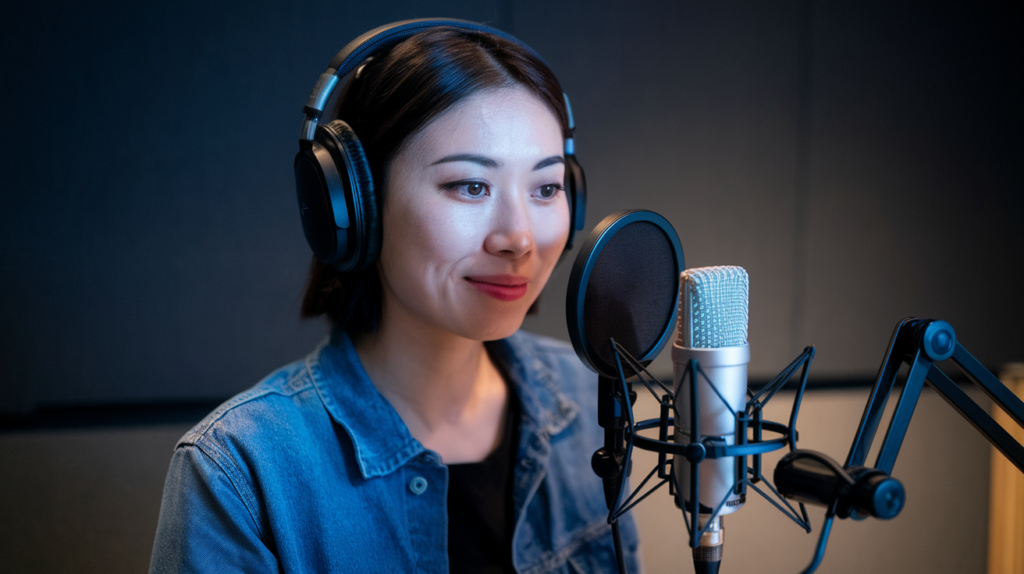Key Takeaways
- Understanding Japanese Dialects: Japanese dialects, or “hōgen,” are vital to capturing the linguistic diversity and cultural nuances across Japan’s regions, enhancing authenticity in media.
- Character Development: The use of regional accents by voice actors enriches character portrayal and storytelling, making them more relatable for viewers familiar with those dialects.
- Cultural Insights: Incorporating local customs and idiomatic expressions into scripts provides valuable cultural insights, fostering deeper connections between characters and audiences.
- Impact on Identity: Dialects reflect local heritage and contribute significantly to shaping characters’ identities, influencing how they are perceived by viewers based on their speech patterns.
- Authenticity vs. Stereotyping: Ensuring authentic representation is crucial; oversimplified portrayals can lead to harmful stereotypes that diminish the complexity of local cultures.
- Role of Voice Actors: Skilled voice talents play a key role in accurately depicting dialects, bringing emotional depth to performances while promoting cultural appreciation among diverse audiences.
Have you ever noticed how Japanese dialects add depth and authenticity to your favorite shows or movies? The portrayal of Japanese dialects in media isn’t just about accents; it’s a window into the rich tapestry of culture and identity. As you dive deeper into this fascinating topic, you’ll discover how these unique speech patterns shape characters and narratives, making them more relatable and engaging.
Overview of Japanese Dialects
Japanese dialects, known as “hōgen,” showcase the linguistic diversity across Japan’s regions. Each dialect embodies distinct phonetic variations, vocabulary, and grammar that contribute to the richness of the language. For instance, Kansai dialect often features a more melodic intonation compared to the Tokyo standard.
The use of these dialects in media significantly enhances character development and storytelling. When voice actors employ regional accents or speech patterns, they bring authenticity to their roles. This not only creates relatable characters but also immerses audiences in specific cultural contexts.
Different voice talents are adept at capturing these nuances. Skilled voice artists know how to convey emotions through their accents while maintaining clarity and engagement. The ability of a voice actor to switch between various Japanese dialects demonstrates versatility and attention to detail.
Moreover, understanding local customs and expressions associated with each dialect can enrich scripts for animated series or films. Whether it’s a comedic performance utilizing Osaka slang or a dramatic scene set in rural Hokkaido, these elements deepen audience connection.
Overall, incorporating Japanese dialects into media doesn’t just enhance authenticity; it provides valuable insights into Japan’s diverse culture and identity. As you explore projects involving Japanese content, consider how regional speech patterns can elevate your narrative’s depth and resonance with viewers.
Historical Context
Japanese dialects, or “hōgen,” have a rich history that reflects the diverse cultural landscape of Japan. Each region boasts its own distinct speech patterns shaped by geography, history, and social influences. Understanding this historical context helps you appreciate how these dialects contribute to media today.
Evolution of Japanese Dialects
The evolution of Japanese dialects can be traced back centuries, influenced by migration patterns and cultural exchanges. As communities developed in isolation, unique linguistic traits emerged. For instance, the Kansai dialect differs significantly from the Tokyo standard due to historical trade routes and regional customs. Over time, as technology advanced and communication became more widespread, some dialects began blending while others remained distinct.
In modern times, globalization has introduced new dynamics to these traditional forms of speech. Young people often mix local dialects with standard Japanese or even English phrases in their daily conversations. This fusion showcases the adaptability of language while also highlighting a dynamic cultural shift among younger generations.
Influence on Media Portrayal
The portrayal of Japanese dialects in media plays a vital role in character development and storytelling. When voice actors employ specific accents or speech patterns, they create authentic representations that resonate deeply with audiences. For example, characters from Osaka often use humorous expressions unique to their region, enhancing relatability for viewers familiar with those traits.
Voiceover talent skilled in capturing these nuances adds depth to narratives across various genres—whether it’s anime, drama series, or films. The use of regional accents not only grounds characters but also immerses audiences into Japan’s culturally rich tapestry.
Moreover, incorporating local customs and idiomatic expressions associated with each dialect enriches scripts further—a detail that astute voice artists recognize when delivering performances. This attention to authenticity elevates productions past mere entertainment; it fosters connections between characters and viewers through shared cultural experiences.
By understanding the historical context and evolution behind Japanese dialects alongside their influence on media portrayal, you gain insight into how these elements shape storytelling today.
Representation in Different Media Forms
Japanese dialects enrich various media forms, offering a window into the cultural nuances of Japan. Their portrayal in film, television, literature, and manga enhances character depth and storytelling.
Film and Television
In film and television, dialects add authenticity to characters. Voice actors often utilize their skills to infuse regional accents into performances. This practice not only reflects the true essence of the character’s background but also engages viewers on a deeper level. For instance, when a voice actor employs a specific dialect, it becomes easier for audiences to connect with that character’s emotions and experiences. Productions that incorporate local speech patterns often resonate more with viewers who recognize these nuances from their own lives or regions.
Literature and Manga
Literature and manga also showcase Japanese dialects effectively. Authors often depict characters’ speech through unique vocabulary and grammar associated with different regions. This representation helps readers immerse themselves in the story while appreciating cultural diversity. In manga, visual cues complement dialogue variations; artists may illustrate characters’ faces or body language differently based on how they speak. Such attention to detail enhances reader engagement by creating relatable connections between characters’ identities and their surroundings.
By understanding how Japanese dialects are represented across media forms, you can better appreciate the richness they bring to narratives. Whether it’s through compelling voiceovers or descriptive text in literature, these elements contribute significantly to authentic storytelling experiences.
Impact on Cultural Identity
Japanese dialects play a vital role in shaping cultural identity within media. These dialects reflect local customs, traditions, and histories, creating a rich tapestry of identities across Japan’s regions. By incorporating these unique speech patterns into characters, productions foster authenticity and relatability for audiences.
Perceptions of Dialect Speakers
Perceptions of dialect speakers significantly influence how characters are received by viewers. A character using the Osaka dialect may evoke warmth and humor, while a speaker from Tokyo might convey sophistication or modernity. Voice actors skillfully utilize these distinctions to enhance character depth. When voiceover talent captures regional nuances accurately, they create connections that resonate with audiences. This authenticity helps break stereotypes associated with different dialects while promoting understanding and appreciation of cultural diversity.
Dialect as a Symbol of Regional Pride
Dialect serves as a powerful symbol of regional pride in Japan. Each region boasts its own unique way of speaking, showcasing local heritage and culture. When media highlights these distinct accents through talented voice artists, it reinforces pride among locals while educating broader audiences about Japan’s linguistic variety. Celebrating these differences not only enriches storytelling but also encourages unity among diverse communities within the nation. The portrayal of dialects embodies both individuality and collective identity, making them essential elements in contemporary narratives.
Contemporary Issues and Debates
Debates surrounding the portrayal of Japanese dialects in media highlight critical contemporary issues, particularly regarding authenticity and representation. Understanding these aspects can enhance audience engagement and appreciation.
Stereotyping and Misrepresentation
Stereotyping often occurs when media oversimplifies regional dialects, reducing characters to mere caricatures. This misrepresentation can perpetuate harmful clichés about certain areas or their inhabitants. For example, using exaggerated accents may lead viewers to form skewed perceptions of a character’s personality based solely on how they speak. Such portrayals overlook the complexity of local cultures, diminishing the rich tapestry that each dialect embodies.
Awareness of these issues is essential for creators. When casting voice actors, selecting performers who genuinely understand the nuances of specific dialects helps ensure authentic representations. Authenticity fosters relatability in storytelling while avoiding generalizations that might alienate audiences familiar with those dialects.
Authenticity in Media Production
Authenticity remains a cornerstone for effective media production involving Japanese dialects. Accurate representation enhances narratives by grounding them in genuine cultural contexts. Skilled voice actors bring regional accents to life with nuance and depth, allowing listeners to connect emotionally with characters.
When producers prioritize hiring voice talent experienced with particular dialects, they enrich stories significantly. These artists not only convey dialogue but also infuse performances with cultural subtleties tied to specific regions—their tones reflect local customs and traditions effectively.
Moreover, embracing authenticity extends beyond just vocal performance; it encompasses collaboration with cultural consultants who guide projects toward respectful representation. By valuing this input during production phases, creators establish credibility while promoting awareness of Japan’s linguistic diversity among global audiences.
Engaging deeply with these themes leads to richer content creation that resonates well beyond national borders—media becomes a bridge connecting diverse cultures through shared understanding rather than misunderstanding.
Conclusion
Japanese dialects play a crucial role in media by adding layers of authenticity and emotional depth to characters. By embracing these unique speech patterns you gain a richer understanding of Japan’s diverse culture and identity.
The thoughtful portrayal of dialects fosters connections between characters and audiences enhancing relatability in storytelling. As you explore various forms of entertainment you’ll likely notice how these regional nuances reflect local customs and traditions.
Ultimately valuing authentic representation not only enriches narratives but also promotes appreciation for the linguistic diversity that defines Japan. Recognizing the significance of Japanese dialects paves the way for more engaging media experiences while celebrating cultural heritage.
Frequently Asked Questions
What are Japanese dialects, or “hōgen”?
Japanese dialects, known as “hōgen,” are regional variations of the Japanese language that reflect unique phonetic features, vocabulary, and grammar. They play a crucial role in expressing local culture and identity, adding depth to character portrayal in media.
How do dialects enhance media storytelling?
Dialects enrich storytelling by providing authenticity to characters. Voice actors use regional accents to convey emotions effectively, making characters relatable and engaging for audiences while reflecting cultural nuances.
Why is understanding dialects important for viewers?
Understanding dialects allows viewers to appreciate the cultural context behind characters and narratives. It fosters a deeper connection with the story by highlighting local customs and expressions associated with each region.
What historical factors influenced Japanese dialects?
Japanese dialects have evolved over centuries due to migration patterns and cultural exchanges. Some have blended over time while others remain distinct, showcasing the adaptability of language amidst globalization influences.
How do dialects contribute to character development in media?
Dialects enhance character development by providing authentic representations through skilled voice acting. By incorporating local customs and idiomatic expressions, creators can foster emotional connections between characters and audiences.
What challenges exist in portraying Japanese dialects accurately?
Challenges include avoiding stereotypes or oversimplifications of regional accents that can reduce characters to caricatures. Authentic representation requires selecting voice actors who understand specific dialect nuances.
Why is authenticity important in using Japanese dialects in media?
Authenticity ensures respectful representation of cultures and enhances narrative quality. Hiring experienced voice talent and collaborating with cultural consultants promotes accurate portrayals that resonate across diverse audiences.
How do Japanese dialects reflect cultural identity?
Dialect usage mirrors local customs, traditions, and histories within Japan’s regions. This linguistic diversity reinforces regional pride while educating broader audiences about Japan’s rich cultural tapestry.







